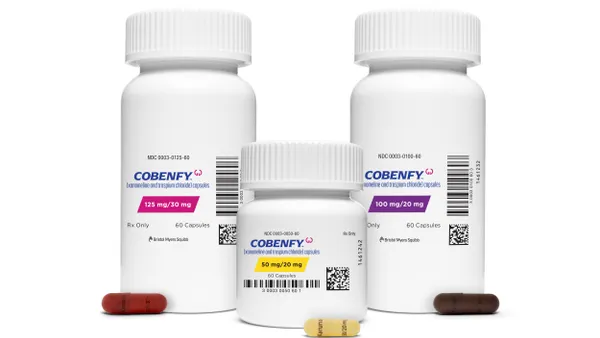While in other industries lost in translation might just mean a misunderstanding, in life sciences it could be life or death.
Crystal clear communication is becoming more important for businesses working in our increasingly connected world. For a lot of companies, an imperfect translation might mean your message doesn’t quite chime with the intended audience. But in the life sciences field, that misunderstanding could have a huge impact on a patient’s health, or the chances of regulatory approval. Accuracy and quality are therefore the absolute fundamentals for translation services in life sciences.
Life sciences content, such as summaries of product characteristics (SmPCs), labeling documentation, informed consent forms, product dossiers, economic assessment reports authorities, manufacturing records, adverse event case reports, ethical committee approvals and more, all come with vital information that must be translated. How can one make sure that the product labeling is compliant to local regulations in all territories where the drug is approved? Or that the product name is appropriate in all languages? Or even that clinical questionnaires take into account specific cultural nuances?
Having a drug or medical device that could deliver life-changing patient outcomes might be great, but it counts for little if your patients or healthcare providers cannot perfectly understand how to use it. Patient engagement and retention can be significantly improved when the documentation provided during a clinical trial is understandable and helps to improve communication between stakeholders, instead of becoming an impediment.
Beyond translations, it is also crucial to consider the localization of content beyond words. Including cultural nuance and acknowledging the local context of the specific territory where the product is being released are important. For example, plans for clinical trials may be impacted by cultural or religious practices, such as communities that fast during certain times of the year.
These challenges can all be met by working with a language services partner that is also concerned with quality standards and understands the regulatory framing and challenges. Gina Wilson, vice-president at Acolad Life Sciences, formerly Amplexor, explains: “In our 30+ years working with renowned leaders in clinical research, pharmaceutical and medical device domains, we gathered a unique understanding of the global requirements challenges that the Life Sciences industry faces. Our teams are equipped to support in all regulatory areas and all our translators are also subject matter experts in the clinical area and have an understanding of local regulatory requirements.”
Market leaders such as Novartis, Gilead, AbbVie GK, Abbott, Lundbeck and Sanofi have benefited from Acolad’s globalization expertise in relation to the requirements and processes of the industry, as well as from its ability to balance quality, cost and flexibility.
The benefits of centralizing language services
“Ensuring labeling content is consistent across different languages and countries can become a daunting task” continues Gina. “We recently helped a Fortune 100 pharmaceutical manufacturer to ensure local versions of its drug labeling were compliant to the Company Core Data Sheet (CCDS). This amounted to labeling for 300+ global products in seven therapeutic areas spanning 145 countries being revised and homogenized. We helped the client to identify gaps in the end-to-end labeling process and provided recommendations for centrally managing global labeling while preventing future inconsistencies.”
It’s quite common for businesses to rely on various providers to translate either on an ad-hoc basis or to have different providers working with different arms of the company. But rationalizing these services brings benefits beyond cost savings. Centralizing translations can also help to solve regulatory compliance challenges, simplify supplier governance, enable content scalability across languages and formats and deliver budget transparency.
For example, by using a single provider it is far easier to harness and expand a language database of reoccurring terms and previously translated documents. This allows for consistency in future translations, and cost savings through having that archive as a resource for future work.
Consolidating translation suppliers also opens the door to an integrated translation solution. Specialized software can allow all the translation management to be done through a central hub, often integrated into a company’s existing systems, in which the whole translation process is managed, from employee translation requests all the way through to purchase order creation. Translation work can still be done by various providers, but the translation center allows for standardized translation procedures, compliance with procurement rules and easy management of very high volumes of translations.
But, finally, centralizing translations can deliver those crucial cost savings and ROI. For example, Acolad Life Sciences was able to help deliver a 20% global cost saving through creating a new centralized global translation program.
There’s a lot more to translation than just words
Beyond consolidation, there are more considerations when it comes to maximizing that crucial accuracy and quality of your life sciences translations, the most important of which are these key points to consider:
1. Find an experienced partner
A language services provider that has documented experience in life science translation will not only be familiar with the conventions, regulations and processes of the industry, but will be able to lean on the knowledge base of its top-quality network of project managers and translators. This expertise will be reflected by being able to provide certified linguists who follow ISO certifications and other quality standards.
2. Precise and clear source documents
Before translation work even begins, it is vital that original documents are proofread by experts who can catch errors. Proofing the source text can save many headaches further on in the process by fixing muddy language too, and spotting typos – particularly important with dosing instructions on medicines. An error in the source text means an error in every translated text too.
3. A standardized process
Following the same process each time not only helps the translation process run smoothly, but having a quality assurance stage before approving translated texts can help avoid serious errors. It also helps to assign experts who can answer questions that might arise from translators about terminology.
4. Make feedback a part of the process
To ensure an ever-improving quality of translation, having space for feedback is essential. It really helps to ensure your company’s preferred terminology is specified and implemented consistently in the future.
In all, today’s life sciences businesses face many challenges in being understood wherever they might operate. But with the right language services provider, avoiding regulatory, linguistic and cultural pitfalls becomes far easier, all while giving the opportunity for significant ROI, or even cost savings.








